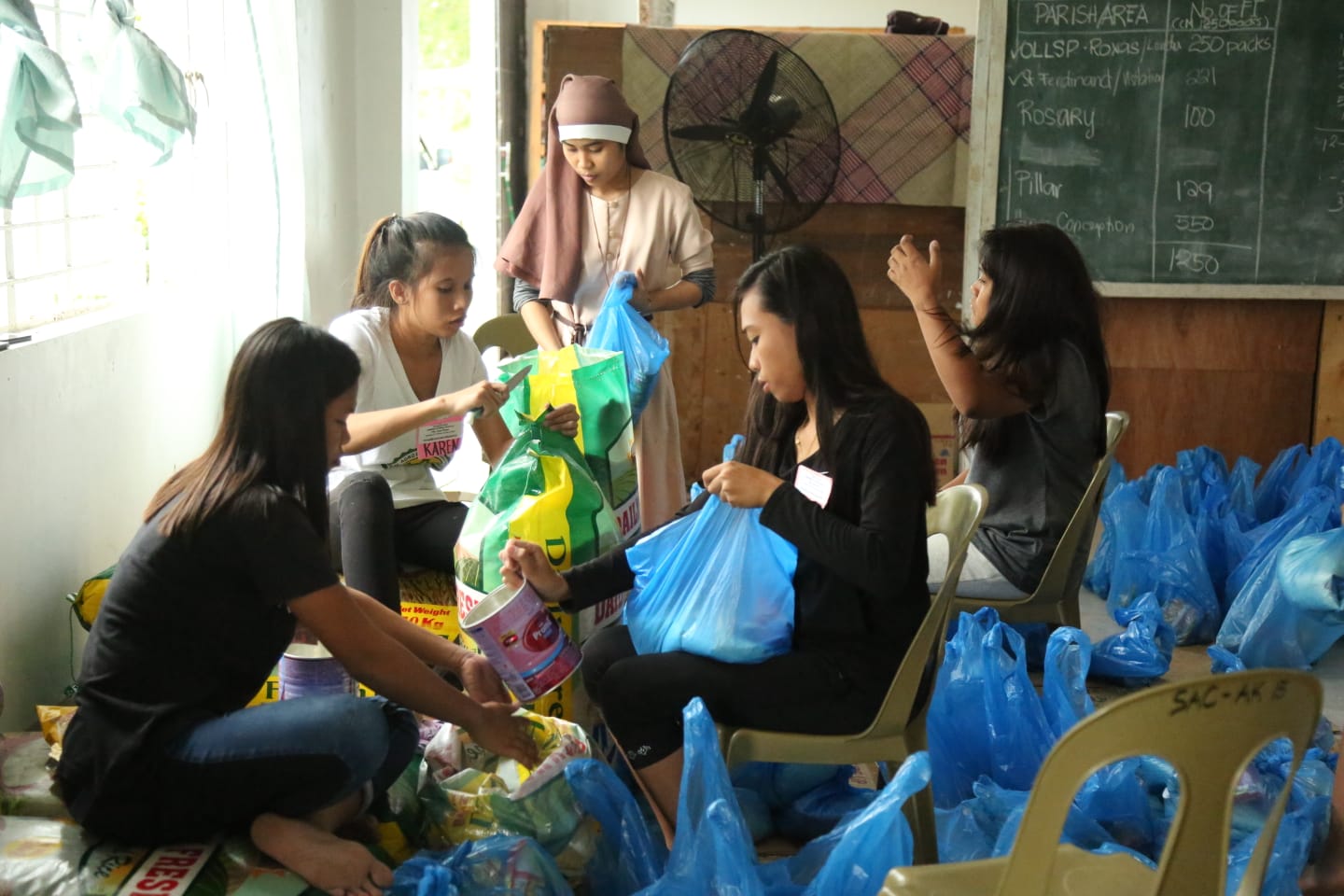Typhoon Mangkhut hit the Philippines on 15 September, with winds of up to 225 Kph. It caused the deaths of over 80 people and led to landslides, flash floods, and devastation of homes, infrastructure and crops.
The storm, known locally as Typhoon Ompong, mostly damaged Northern Luzon and parts of Central and Southern Luzon, one of the main islands of the Philippines. In this area, storm surges up to six meters high submerged coastal areas.
Caritas, working with government and other humanitarian organizations, made extensive preparations before the typhoon made landfall. We set up evacuation centers and pre-positioned emergency relief kits.
Caritas Australia’s Senior Programmes Coordinator for Emergencies, Richard Forsythe, said the quick response and long-term disaster preparedness training within the communities had assisted many who were badly impacted by the typhoon.
“The Philippines is a country where many people are Catholic and there is a large church network,” Mr. Forsythe said. “Because we are embedded in local churches, part of the social fabric of communities, we were often the first responders, able to provide food, water, and shelter to those most in need.”
By deploying Rapid Assessment Teams and an operations center, Caritas helped gauge storm damage. We also helped to deliver essential food, such as canned goods and rice, as well as hygiene kits.
“Immediately, we were able to provide more than 3,000 people with food relief in the six hardest-hit dioceses,” said Fr. Edwin A. Gariguez, Executive Secretary, NASSA/Caritas Philippines.
Caritas also set up a system to transfer cash to disaster-affected families through private financial service providers immediately after the disaster.
The Caritas network was in the Philippines before and during the typhoon, and now it is working to help people who had their lives turned upside down by the storm.
Mangkhut affected 388,136 families, or around 1,633,746 people, according to government statistics, with 32,320 families still in evacuation centers. The typhoon damaged an estimated 223 million euros worth of crops, with rice, corn, vegetables among the worst hit.
With buildings, roads, water, electricity and communication systems destroyed, much humanitarian work remains to be done.
“Now we need to provide them with more sustainable aid: shelter, livelihood support and enough emergency preparedness skills to respond to future disasters,” said Fr. Gariguez.
“And we are not just talking about our social action centers, but more importantly, about our communities’ capacities to bounce back,” he added.
Many of the worst affected people come from the most impoverished communities in the Philippines.
To help those affected by the typhoon, Caritas has launched a global fund-raising appeal to provide for the early recovery needs of almost 3,000 families with food, non-food items, shelter, livelihoods, and capacity building.
However, Caritas interests in the Philippines are long term. “We have been doing our best to influence the government and aid agencies to integrate humanitarian response with llonger-termdevelopment programming,” said Fr. Gariguez. “We are the most ddisaster-pronecountry in the world.”

The local Caritas team packs the initial relief goods for distribution to families in the evacuation centers in Ilagan, Isabela. - © Caritas
Philippines: Caritas Continues to Provide Typhoon Relief
Mangkhut Affected 388,136 families, or Around 1,633,746 People


